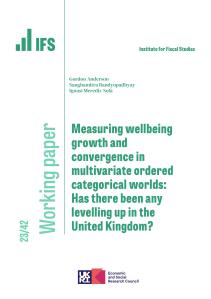We document the evolution of average incomes, poverty and inequality over the period of Labour government from 1997 to 2010, comparing these trends with those seen over other periods in recent history. We also relate these changes to Labour’s stated distributional objectives, which we argue were clear in relation to the bottom of the income distribution (and absolutely explicit in relation to child poverty), but much less clear in relation to inequality more generally. It is thus perhaps no surprise that we observe substantial falls in child and pensioner poverty alongside increases in overall income inequality, with the latter largely driven by growth in top incomes. We also use micro-simulation techniques to demonstrate the crucial importance of direct tax and benefit reforms in driving the changes observed over this period.
Figure 9: Effects of direct tax and benefit reforms under Labour on relative poverty rates
Notes: Years refer to financial years. Poverty rats are measured by the percentage of the group with income below 60 per cent of the population-wide median. Incomes have been measured before housing costs have been deducted.
See the IFS Observation related to this publication









